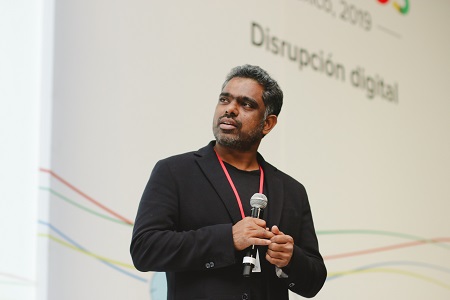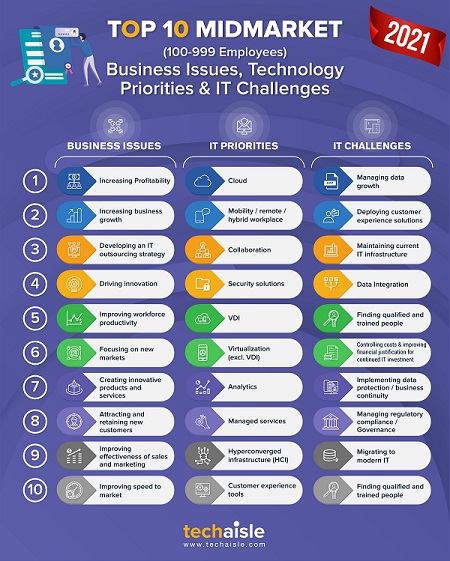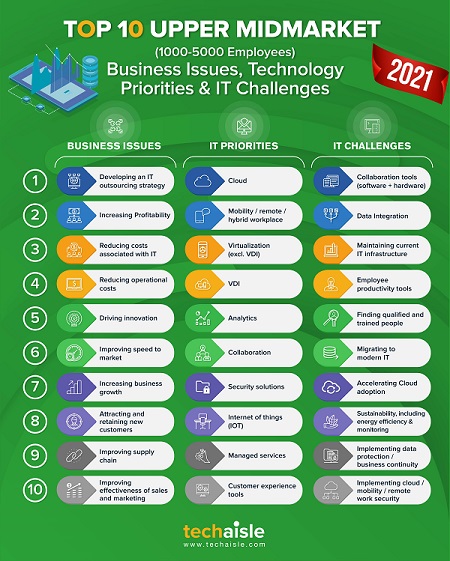Techaisle SMB and Midmarket AI and Analytics adoption trend research shows tremendous analytics scope to deliver more forward-looking predictive or prescriptive perspectives. In addition, there is a need to support the development of evidence-based corporate cultures that value positions and decisions based on data. Still, there are a mix of technology, organizational and cultural issues that businesses need to address along the journey to this future point.
Zoho is on a quest to enable the future point. One of Zoho's primary goals has been to offer end-to-end business applications that allow businesses of all sizes to automate business workflows. But it is not enough to enable companies to automate the workflows or collect data. It is also vital to have a platform, which gives businesses the capability to understand the data, analyze it and drive insights. If analytics is the key to connecting data to executive objectives, the cloud is the platform on which analytics and data – and digitalization and many other impactful solutions – will reside. With 13,000 paying cloud customers, separate from 50,000 who are using Zoho bundles (Zoho one – a collection of 45 apps), the Zoho analytics platform is knocking on the doors of established players.
Zoho has built its analytics platform vision on four pillars providing an end-to-end solution:
1. Self-service data preparation and management:
Zoho DataPrep, an AI and machine-learning driven self-service application, enables users to retrieve data from a wide range of sources, smartly cleanse, transform, enrich and prepare the data for practical analysis. It includes auto modeling and ML-based enrichment. Because of its popularity and ease of use, Zoho also offers its DataPrep tool as a stand-alone service.
2. Visualization and analysis leading to data stories:
An integrated enterprise portal builder (Zoho Sites) and presentation software (Zoho Show) enables business users to analyze data through self-service interfaces like drag and drop interface or natural language processing as well as other automated analysis for developing insights.
3. Augmented analytics for insights and actions:
Augmented analytics component enables business users to get both prescriptive and predictive insights from data. What-if analysis and forecasting models are a core component of augmented analytics.
4. Marketplace apps:
Developers and partners can develop analytical apps and publish them on Zoho's marketplace. Applications such as Jira, ServiceNow, and Shopify have seen the highest uptake within Zoho Analytics customers.
AI and ML seamlessly embed into all the components of the analytics platform. A crucial part of analytics initiatives in any business is preparing the data for insights. Marc Fishman, Director of Sales and Marketing, Call Center Sales Pro, could not contain his excitement when speaking with Techaisle about Zoho's DataPrep tool. He said, "the recent release of DataPrep honestly blew us away, causing us to explore that potential sharing of call center data. Depending largely on the toolset available to us after successful import, we have many options to consider — both internally and potentially externally for our customer base. It's beyond exciting!"
Many lenses can assess the importance of analytics and AI in the SMB and midmarket segments. One that illustrates the pace of these segments is the often-cited 'hype cycle,' which begins with a "technology trigger," soars to a "peak of inflated expectations," crashes down to the "trough of disillusionment," and then rises through a "slope of enlightenment" to a "plateau of productivity." Analytics and AI provide excellent examples of how this process plays out in the IT-centric world. As a concept, AI has lived at the peak of inflated expectations for many years, borne aloft by an amorphous vision of systems that will automatically know what's needed next. This is because, based on some elixir that combines a large quantity of data with fuzzy algorithms, supported by computational capacity delivered by Moore's Law, the rising quantum, or some combination of future breakthroughs. Meanwhile, analytics has followed a more gradual path, showing both real current benefit and the promise of additional value in the future – at which point, naturally, it will become a sidekick to AI.
Unfortunately, this is not an entirely apt description of the evolution of analytics and AI in the real world, especially in the midmarket segment. Despite bold claims to the contrary, businesses have primarily deployed analytics applications to consolidate data from diverse sources into an intelligible whole. Analytics as a discipline has been mainly concerned with using that data to create dashboards that illustrate current status and immediate or potential problem points. That is, as a descriptive or diagnostic tool. Techaisle research shows that 53% of US midmarket firms use analytics to provide a diagnostic view of the business, and 39% use analytics to recommend actions, in other words, prescriptive.
Zoho's unified business analytics platform may well change the adoption from diagnostic to prescriptive. Zoho's simple, cost-effective BI tool enables collaborative analytics and quickly provides 360-degree views of customers or the entire organization.
So what do SMBs and midmarket firms require of an analytics solution, and does Zoho meet those needs? Techaisle's survey respondents provided a definitive perspective that surprisingly reinforces the pillars of Zoho's analytics vision. "Solutions that enable self-service for non-technical users" is at the top of the requirements list for both small and midmarket organizations. It is a wise point of emphasis, given that research has found that utilization rates, satisfaction, and ROI increase if users can access analytics systems without IT support. As a result, Zoho has developed its platform for non-technical users. The following most frequently cited attribute, "platform technologies that integrate analytics and presentation," is ranked second by small businesses and midmarket firms. This focus reflects frustration in trying to integrate different tools to meet parts of the overall analytics requirement. For example, the Zoho Show platform integrates with Zoho analytics to create a slide deck and seamlessly embed reports and dashboards to make an interactive and immersive presentation. The third-ranked component in the midmarket findings, "big data designed and enabled database," reflects an immediate need. Similarly, "well-defined security and privacy implementation" reflects a segment-specific need for supplier assistance in ensuring that security is applied to the system of insight, ensuring that data analysis doesn't lead to data leakage. Of course, we all know that Zoho zealously protects user privacy.
Zoho is hitting on all the requirements of midmarket firms, and businesses are noticing. As Marc Fishman, Director of Sales and Marketing, Call Center Sales Pro, said, "We selected Zoho because of the ease of data sharing and integrated Desk, CRM, and connectivity applications. No other suite compared — both in price and breadth — that offered us so many tools we could immediately use."
Zoho analytics platform is built for non-technical, non-analytic users but has the depth and capabilities for technical staff and data analysts. Its best feature is data preparation, which alone is enough to justify using Zoho analytics platform. The platform delivers rapid time to value.



















